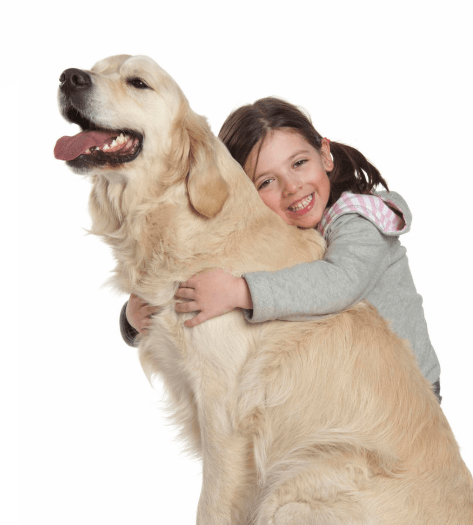DOGS AND CHILDREN
This article addresses the subject of dogs and children. Many of us are adding dogs into our homes and forget that they are still animals. Those cute little doggy eyes looking up at you when you by your new pup never prepare you for nuisances like nipping or even worse dog bites!
Dogs need adult supervision and so do children, ESPECIALLY when they are together! I want to begin by stating that so it can sink in. Never is it a good idea to let them be together unsupervised. This is surely an accident waiting to happen. It is even more imperative that you heed this tip if you have an untrained dog. Its never a bad thing to have some obedience.
Most people see pictures of dogs with children or watch a movie where the dog and the child in the movie are inseparable and get caught up in what I like to call THE DISNEY FACTOR. Technically it is called anthropomorphism, but for the rest of us that don't have our dictionary handy basically it amounts to when humans interpret some emotion coming from their dog that simply isn't there.
When a dog owner gives their dog this imaginary personality they become complacent to the fact that their dog is an animal and DOES NOT react or think like a human. When you mix this with a child that doesn't understand this you may get perilous results.
Why do dog bites happen?
There are many factors in a dog biting someone, but you can rest assured that a dog will ALWAYS tell you a bite is coming. It is up to you, the ADULT OWNER to learn to read your dog and to educate your children how to properly act around dogs in general. And we can't stress enough how important dog obedience and behavior modification is.
Some of the factors include temperament and drive of the dog. These come with the dog when he is born. These are NOT factors that you can change. You can, however, manage them through Working breeds of dogs are becoming a more popular choice of house pet and some of these dogs have a drive to chase things. Their job out in the "wild" is to hunt or chase their prey, for example, and your toddler may have the same movements as prey from the dog's point of view. This is just one general example of a built-in factor that can contribute to a dog biting a child. This is why it is so important to do your homework BEFORE you take any dog home. When you find the right one (or two...or three) spend time educating both the dogs and children.
Other factors include improper socialization of the dog, lack of instruction for the dogs and children, lack of training, and lack of what we call pack leadership.
Leadership is a hierarchy in the dog world. Think of the "corporate ladder". The boss is on top and everyone else in the company is below him on a vertical plane. The dog, in my opinion, needs to be at the bottom rung of the ladder. Once the dog understands that everyone else in the household is above him you create a safer happier environment that lends itself to a behaved pooch.
That's only the dogs side of this equation. What do I teach my children?
Here are a few tips to share with your children.
- NEVER APPROACH A STRANGE DOG
- NEVER STICK YOUR HAND DOWN IN FRONT OF A DOG'S NOSE TO INTRODUCE YOURSELF This point is worth its weight in gold in dealing with dogs and children! ..."let the dog smell your hand"...I was taught that when I was a child, and I hear this wives tale echoed from EVERY SINGLE client that I have ever worked with. The bottom line is that a dog can smell you JUST FINE from a safe distance. It can be confusing for a dog when your body language changes, especially with dogs and children and may even be mistaken as an act of aggression from you if you stick your hand in front of the dogs face. Obviously not every dog will react with a bite. I never got bit by doing this action, but I have seen it happen. Why take the chance, especially with your children? Teach them good habits now and reinforce them. Dogs and children CAN co-exist happily with a little education.
- Don't Play Excessively Hard With The Dog & NO TEASING The Dog Again, use common sense to prevent dog bites. If a dog gets hurt from playing too rough, you guessed it, he may bite out of simple reaction to pain. Teach your children how to constructively play with your dog and save the wrestling for the stuffed animals.
- Leave The Dog Alone When It Is Resting And Eating No matter what rank the dog is in a pack, once it has earned a meal the other pack members in the "wild" do not bother him. Let Fido eat in peace. Sometimes dogs need alone time as well. Let sleeping dogs lie, literally.
- Use A Crate
- Those are good solid tips to teach your children. But what do you do if a dog is starting to get too rough?
- STOP MOVING! It is not the be all end all of how to fix this problem, but its the FIRST STEP. Teach your children not to run and scream. Stand up and don't move. If that doesn't help the situation, you need to seriously consider .
These are great for YOUR dog, but out in the wide world of stray and strange dogs here are a few more tips on how to act and what you can teach your children to stay safe.
- Never Approach A Strange Dog No Matter How Friendly He Looks
- Never Tease A Dog
- If A Dog Approaches, STAND STILL with your hands down at your sides and DON'T SCREAM. Don't look the dog directly in the eyes, but keep your eyes on his body.
- Don't Let A Dog Circle Around You If a dog starts to approach you and tries to go behind you CALMLY stand with your hands at your side and circle with the dog so you can see where he is at ALL TIMES.
- If He Gives You Warning Signs Like Barking Or Growling put something in between you. A book bag or a purse is a much better target if a bite happens than your leg or your flailing arms.
- If A Dog Does Attack assume the fetal position and protect your head. This is the last resort.
Some interesting tips:
- Dogs that are wagging their tails aren't always happy. The one time that I personally got a serious dog bite the dog came up to me with his tail wagging! Sometimes it can just signal nervous energy.
- Don't chase the dog. This is a natural game that turns into a test. and remember dogs communicate with their mouths and that can mean a nip or a bite in the end of that game!
Hopefully this article will get you on the road to success in educating both your dogs and children.
We always cover any nagging behavior problems that you are experiencing as well, such as: Housebreaking, Jumping, Barking, Nipping and Biting, Destructive Chewing.
We also extensively cover the ins and outs of Housebreaking and Crate Training your dog.


